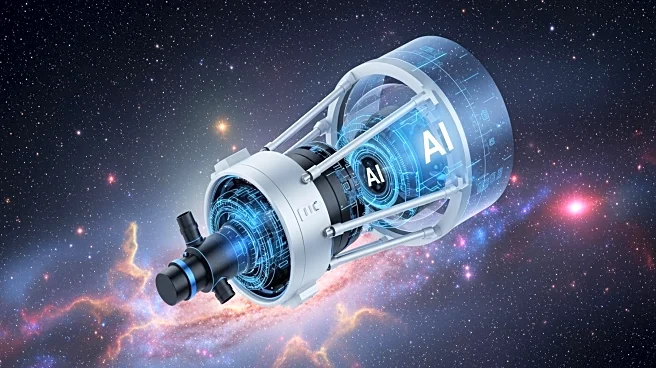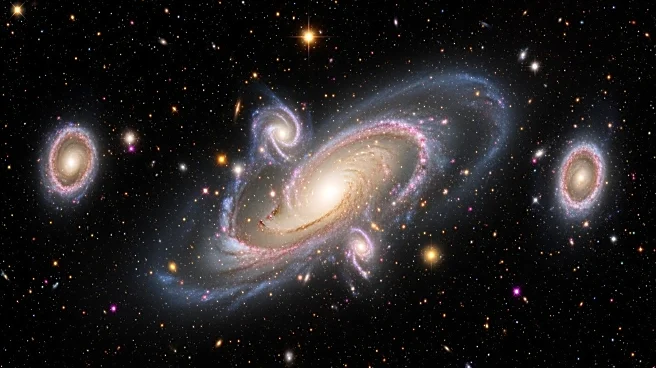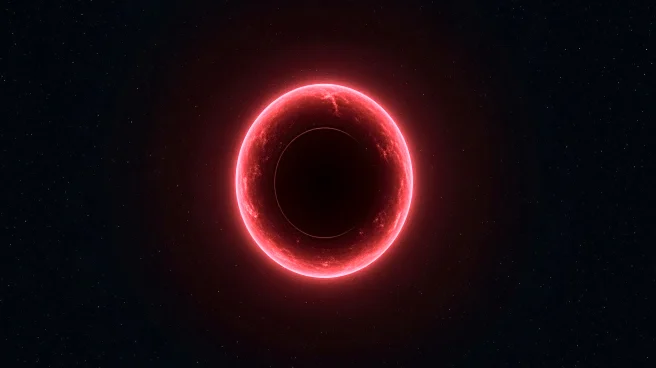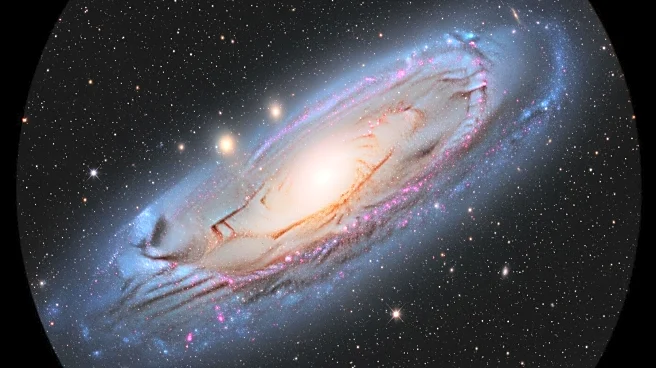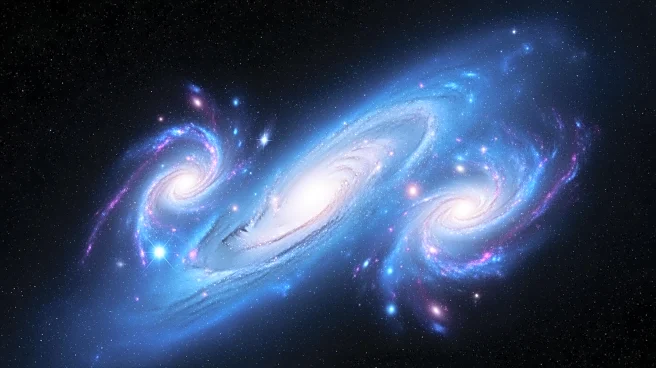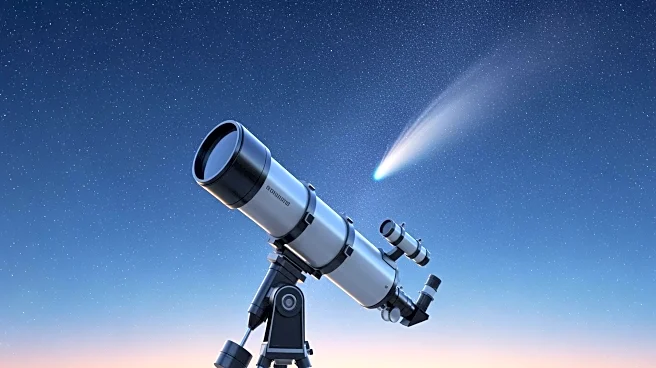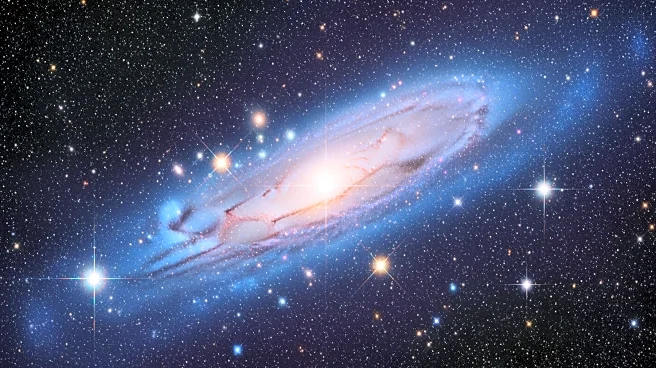What's Happening?
Australian researchers have developed an AI algorithm to correct the James Webb Space Telescope's blurry vision. The Aperture Masking Interferometer (API) component, designed for exoplanet imaging, experienced
electronic distortions. The AI algorithm, AMIGO, detects and corrects affected pixels, improving image quality and enabling detailed observations of distant celestial objects.
Why It's Important?
The AI solution enhances the telescope's scientific capabilities, allowing for more precise observations of exoplanets and other cosmic phenomena. This advancement demonstrates the potential of AI in addressing technical challenges in space exploration, contributing to the telescope's mission of uncovering new insights about the universe. The improved imaging capabilities may lead to significant discoveries in astronomy and astrophysics.
What's Next?
With the AI algorithm in place, the James Webb Space Telescope is poised for further exploration and discovery. Researchers will continue to utilize the enhanced imaging capabilities to study exoplanets and other celestial bodies. The success of this AI application may inspire similar solutions for other space missions, advancing the integration of technology in scientific research.
Beyond the Headlines
The use of AI in space exploration highlights the intersection of technology and science, emphasizing the role of innovation in overcoming challenges. It also underscores the importance of collaboration between researchers and technologists in advancing scientific knowledge and exploration.


